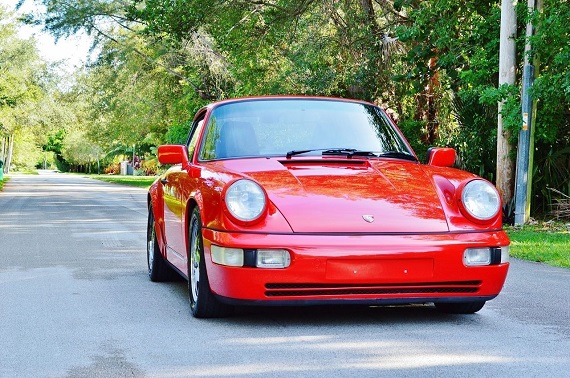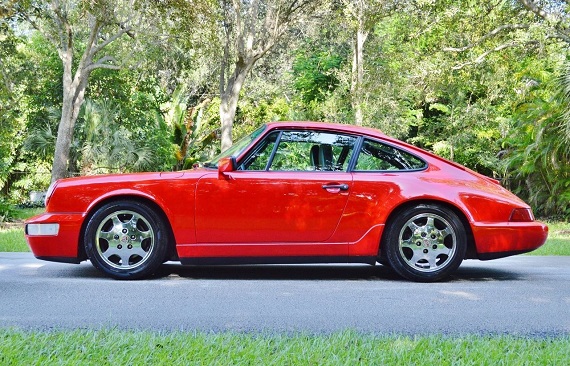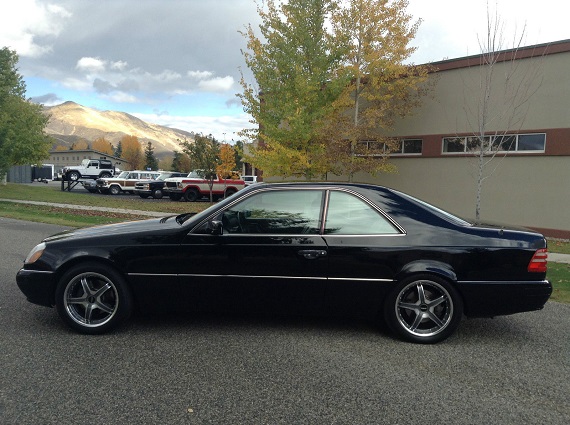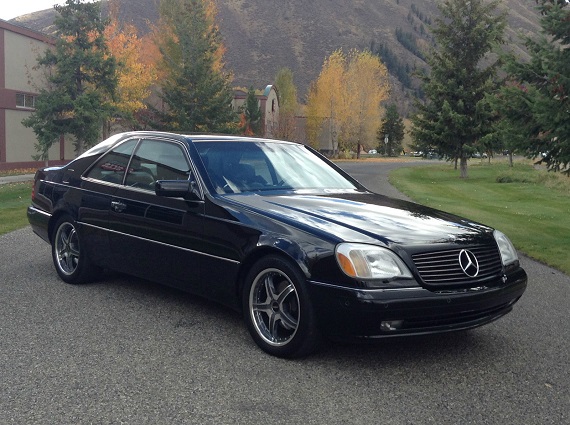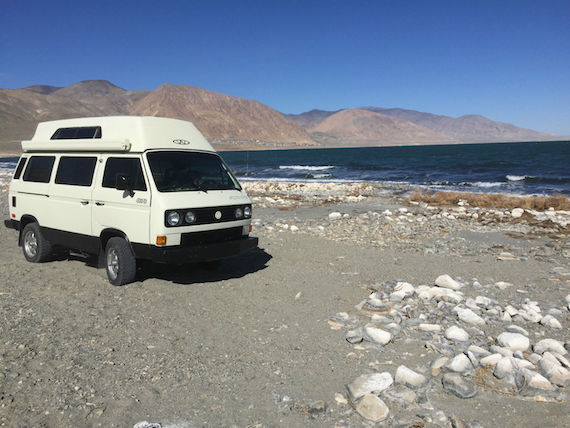
An old friend emailed me the other day for advice on getting his own adventure van. We ran through the whole gamut of options, from the classic Westy to Sprinters to Ford Sportvans to Transit Connects. We had some good discussions examining various priorities and rationales, and he had a hard time envisioning shelling out $35k for a nice 25 year-old van, even if Volkswagens are clearly the most stylish and sentimental choice. So, we looked at some other options and kept the discussion going.
Then this van came onto eBay, and I was right back in a puddle of Vanagonlove. The High Tops have grown (no pun intended) on me a lot recently with even greater sleeping and storage space than the standard Westy. They still have a small-van footprint, but bring big-van capability, especially with Syncro. This van has had some very interesting modifications, most importantly a turbocharged Ford Zetec conversion by well-known Van converters Bostig mated to a rebuilt transmission. You could spend days reading the aggressive arguments on forums debating the pros and cons of different engine swaps – 1.8T keeps it OEM+, Subaru has the most power potential, the Ford has the most parts availability, and then there’s the one guy in the corner shouting “911S! 911S!” I move on as soon as people start saying THERE IS ONLY ONE GOOD OPTION, as it seems like all can result in awesome vans as long as the work is well-done and holistic. All of this to say that I have no issue with a Ford engine in a Vanagon and see it as a reliable, reasonably efficient way to more power.
The other modifications are not nearly as contentious or involved as the motor swap, but they do contribute to creating a unique and attractive van. The interior has been swapped out for that from a top-of-the-line Carat, creating an OEM-plushness the Syncro never received. One of the coolest and most resourceful modifications is using the passenger-side jump seat mounts to hold the stove and fridge combo but leaving it detachable, so it can be placed outside the van under the awning when camping. Genius! Other aesthetic and mechanical bits abound, from the always-lovely (and trendy) South African grille and headlights to big brakes and Emu shocks. A very tidy and sorted package that, despite hot bidding even as I type, is way below normal Syncro Westy prices.
